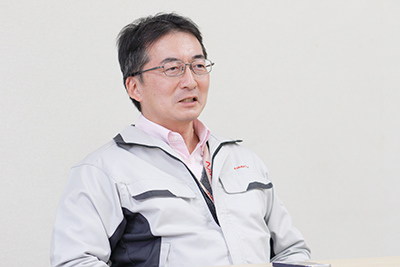Role of digital phase: make plans into a concreate shape
The digital phase is the first process of car product development. It is about making product plans and design concepts into cocreate shapes. Some may think that a new vehicle creation requires numerous prototype models; but in reality, there are only about three tangible models assembled throughout the entire processes. A large portion of car development relies on the digital simulations instead of using real models; one of the most important processes among others.
In the digital phase, the team configures a set of specific numerical/target values for each item in the list of specifications provided during the product planning stage. They conduct a set of simulations or digital experiments, depending on the situation, for the entire vehicle body or for each assembled component to achieve the target values, for the purpose of incorporating the result into the final design plan. The target values must be viable, but impactful enough to differentiate themselves from the competitors. And simply, the performance should always be in tandem with costs. In fact, the task of the product development department is to finalize the calculation of the costs involved for each different set of specifications through the discussions with the manufacturing departments at Mitsubishi Mizushima Plant, Supply & Procurement department, Cost Control department, and also the suppliers they purchase components from.
NMKV serves as a facilitator between Nissan’s product development team at Atsugi and Mitsubishi’s manufacturing team at Mizushima by means of work coordination, meeting arrangements, and tracking the progress of the Project. The main members of the product development and manufacturing teams of both companies, including the Chief Vehicle Engineer (CVE) who’s in charge of the development of new Nissan vehicles, continue to assume their positions at NMKV concurrently. They proactively exchange information through ample discussions as the member of NMKV family. Their drive is characterized by their ambitious commitment and tenacity for perfection; striving to achieve the common goal of satisfying the target values. Developing a Kei-car requires everyone to move very fast. The period of time allocated for the digital phase is approximately six months. Unless the communication is kept intensive beyond the physical distance of East and West regions of Japan, it would be impossible to meet the deadline.

Saitou, CVE
The climax of such digital phase is a decision-making meeting where they determine the level of commitment expressed as a set of target values over areas of performance, quality, costs, and investment. “At the meeting we agree on the specific level of our commitment represented as a set of target values so that we can tell everyone ‘these are the numerical targets we want to deliver’. We never compromise our level of commitment. We relentlessly create an exceptional vehicle that not only satisfies our customers but also exceeds other models sold by our competitors”, says Saito CVE. The digital phase comes to a finale when it gains the approval at an evaluation meeting where they confirm the level of commitment is satisfied and is capable of meeting the stipulated requirements for the quality it envisions, through the data obtained from simulations and experiments. In other words, an official approval is given to begin manufacturing the new model once the digital simulation of such model is proven to be effective.






